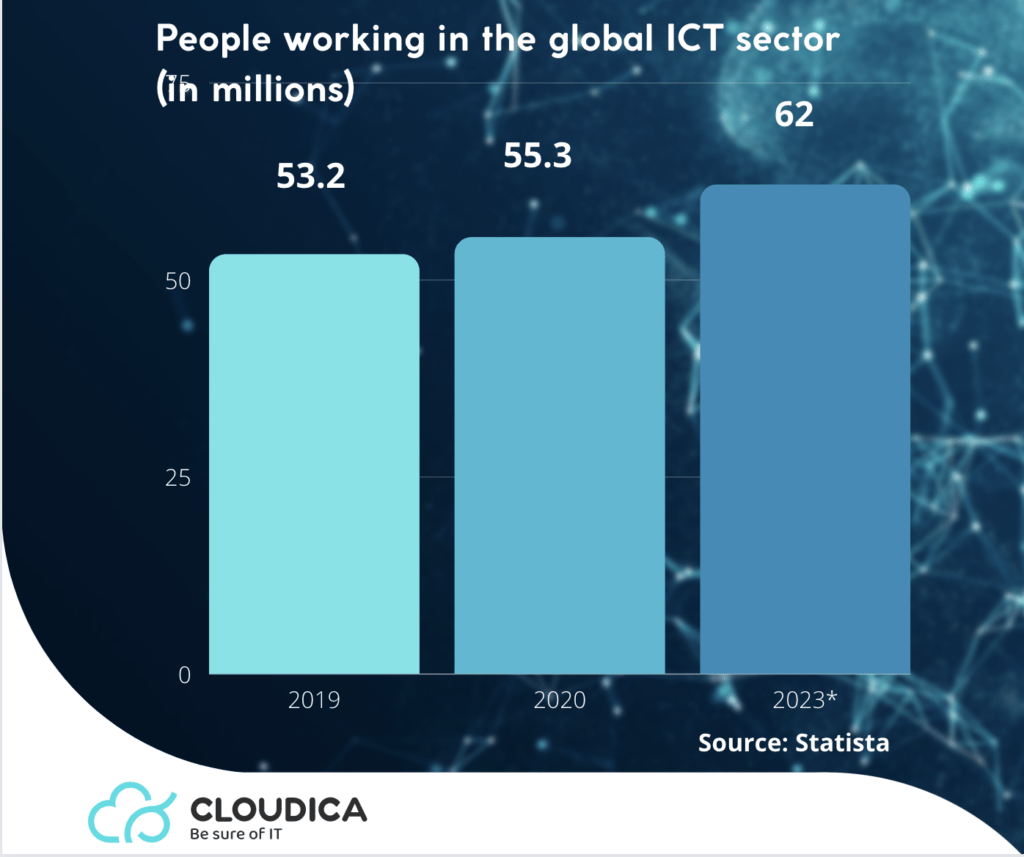By Adam Kotecki, CEO of Cloudica
The IT sector is one of the swiftest growing industries worldwide, as more and more professionals join this exciting and fast-paced environment. But the general profile of the typical “IT professional” is also enjoying a renaissance.
“Hello, IT. Have you tried turning it off and on again?” is the famous quote from the British comedy series The IT Crowd, depicting two awkward men stuck in the bowels of the company’s basements, having to deal with endless calls from the various departments to fix their computers.
Over the next two decades, the image of the “IT guy”, has changed significantly. Long gone are the days when the IT department is the forgotten stepchild of any large corporation.
The ‘Commodity culture’
The spread of technology has caused IT-related professions to proliferate. Today, we see different “IT specialists” who have built a career in a specific market sector – from cloud development through Java and Android coding, to a veritable alphabet soup of other specializations, including .NET, PHP, UX, and QML.
People who have been in the industry for as long as I have observed a “virtualization” of the IT world. At first, programmers wrote machine code (does anybody remember Assembler?!). Later came the time of interpreters (e.g. Microsoft Basic), then another phase and object-oriented languages (C++) appeared.
Further virtualization resulted in the reuse of entire modules and parts of code. More recently, the sector has been moving towards programming automation (self-programming) and low-code/no-code models. This means that a layer of virtualization separates the programmer from the code, leaving him (or her) to figure out only the logic and visual aspects of the software.
Populating the industry
Along with these “backend” changes, we have also observed a significant shift in the makeup of the community. What was once a sector almost exclusively made up of males from technical universities and schools – the now-stereotypical “nerds” with glasses, working somewhere in the corner of an office and illuminated by the bluish light of a large CRT monitor – this population has expanded to include the general public and is now virtually statistically indistinguishable.
According to Statista, by the end of 2023, there will be 62 million people worldwide working in the ICT sector – an increase of a staggering 16.5 percent over 2020!

Women have also been taking a more active role in the industry. A recent report by US-based career consultancy Zippia said that 22.7 percent of all information technology professionals are women. This is a significant increase over the situation just a few years ago, when the IT sector was made up almost exclusively of men.
Information is in the center again
While the world is moving forward at breakneck speed, it does not mean that everything is changing.
There are many new jobs (which were unheard of when I was still starting out), such as data analysts, process analysts, AI engineers, knowledge workers (Data workers), and Data engineers, to name just a few. But we must not forget that a lot of what makes the sector tick along are still the “core” roles, such as network specialists, security engineers, system administrators, and low-level programmers (although the latter are an endangered species),
We are also observing a return to the original meaning of the term “Information technology” – the science of data processing. The reason for this is that we have reached a point where all hardware and technology is merely a commodity. The goal is to be able to work with data.
Factors that have changed the landscape
The current market – particularly the needs and expectations of a new generation of IT professionals – has been greatly influenced by a combination of several events and achievements.
These include:
- Easy, widespread, and inexpensive access to mobile Internet
- Low-cost, secure, and flexible cloud storage and processing capability
- The processing power available for any mobile device like laptops and phones
- Easy, cheap, decentralized international money transfers
But these developments which evolved over the last decade were also given a boost by the recent pandemic, and the subsequent lockdowns which definitely accelerated the transition to remote working.
Probably, the technical achievements mentioned above, even without the pandemic, would have led to these changes anyway, given enough time. But these changes would have been evolutionary rather than revolutionary.
After two years of Covid, people in IT – particularly the people just joining the industry – do not feel the need to work from the office.
This brings out new benefits, as well as risks that were unthinkable just a couple of years ago:
- More time: People have more time to dedicate to their hobbies as well as side interests
- Fewer costs (for employees and employers): By not working from an office, employees save on commuting, while companies do not need to lease expensive office space.
- Less control: Despite the hundreds of tools available, as well as the dozens of very effective project management solutions, it is still harder to manage a team remotely.
- The need for more independence: The above factors have led to a situation where professionals do not want managers to be “breathing down their necks” and want to do things their own way.
Job market is wide open
Today, job location is completely irrelevant, while other issues which were taken for granted when I was starting out in the industry, including time zones, are now a dead concept. Due to the reduction of physical border as a result of increased work mobility and availability, the salaries in the IT market have normalized across the European mainland. For example, for example, from eastern Europe in IT earn similar salaries as their peers in western Europe. This situation has not been observed in other sectors where remote work is not as widely accepted.
These factors are advantageous, but also bring about their own problems.
IT professionals are often self-employed, operating not only in their field of expertise but have to deal with other issues once solely in the realm of businesses, such as personal branding, accounting, self-marketing, etc.

We have come a long way from “Technical expert” to “Entrepreneur”, but for many IT professionals, the reality is the same: fixing the world, one code at a time.
This perception of professionals, especially in more senior ones, makes it necessary to reformulate the relationships that exist in the market, especially in the triangle Client – Professional – Service Provider. The markets for workers and employers have expanded, although the long-term consequences are still unclear.




